NEW HOPE, PA – The Delaware River Joint Toll Bridge Commission set new record highs for traffic volumes and toll transactions in 2016, the agency announced today as it posted its annual average daily traffic counts on its public website.
Nearly 144.5 million crossings were recorded at the Commission’s 18 vehicular bridges last year, – marking the second consecutive year that the bistate transportation agency attained a new traffic-volume peak.
Overall, slightly more than 2.8 million more vehicles crossed the Commission’s bridges in 2016, a nearly 2 percent increase over 2015 when about 141.7 million vehicular crossings were recorded. (Note: the percentage is slightly inflated because 2016 was a leap year.)
On average, the Commission’s 18 vehicular bridges handled an average 394,800 crossings per day in 2016 – roughly 6,600 more vehicles per day, or a 1.7 percent increase, over 2015.
“Even when accounting for 2016 being a leap year, the Commission’s bridges saw larger traffic volumes during the year,” said Joe Resta, the Commission’s executive director. “We saw increases in freight traffic, job commuters and recreation travel during the year.”
The traffic increase mirrors a national trend of increased motor vehicle travel in recent years due to improved employment conditions and lower fuel prices. According to Federal Highway Administration statistics, motorists drove more than 3.2 trillion miles in the United States during 2016 – a 2.8 percent increase over the previous year.
The Commission’s toll bridges were the driving force behind the agency’s traffic increases in 2016. Two-way traffic at the Commission’s seven toll bridges in 2016 rose an average 3.38 percent over the previous year’s figures.
Traffic in the agency’s toll-direction lanes during 2016 climbed 3 percent, with a new record of 40.8 million toll transactions recorded during the year. The previous high-year mark was 39.6 toll transactions recorded in 2015. (Note: the Commission collects tolls from motorists travelling from New Jersey to Pennsylvania at its seven toll bridges.)
One surprising development during the year was that fewer crossings were recorded at the Commission’s 11 toll-supported (non-toll) vehicular bridges. Traffic volumes at the toll-supported bridges declined 0.13 percent in 2016, as these bridges handled roughly 600 fewer crossings per day when compared to 2015.
One other trend recorded by the Commission in 2016 was increased E-ZPass usage. Nearly 67 percent of the agency’s toll transactions occurred electronically through E-ZPass during the year. Slightly more than 64 percent of passenger vehicle drivers used E-ZPass to pay their toll. Meanwhile, more than 85 percent of commercial vehicle drivers used E-ZPass to pay tolls.
The Commission’s 2016 average annual daily traffic (AADT) statistics are now available for public viewing on the Traffic Counts page of the Commission’s website, www.drjtbc.org. The Traffic Counts page lists the AADTs for each of the Commission’s 18 vehicular bridges and can be found in the website’s Bridge Info section. There also is a direct link at the bottom of the website’s homepage.
